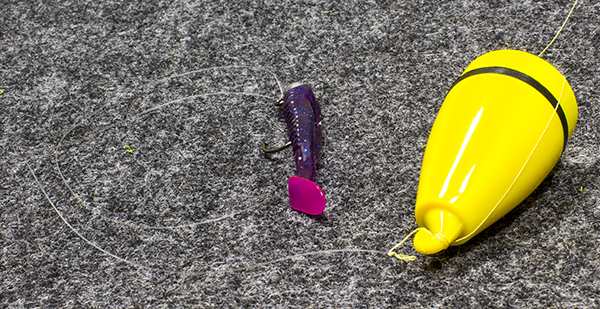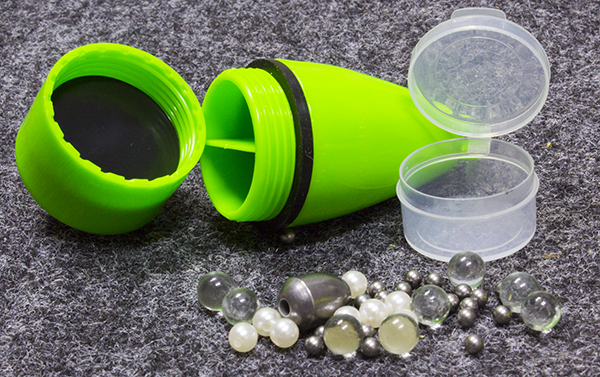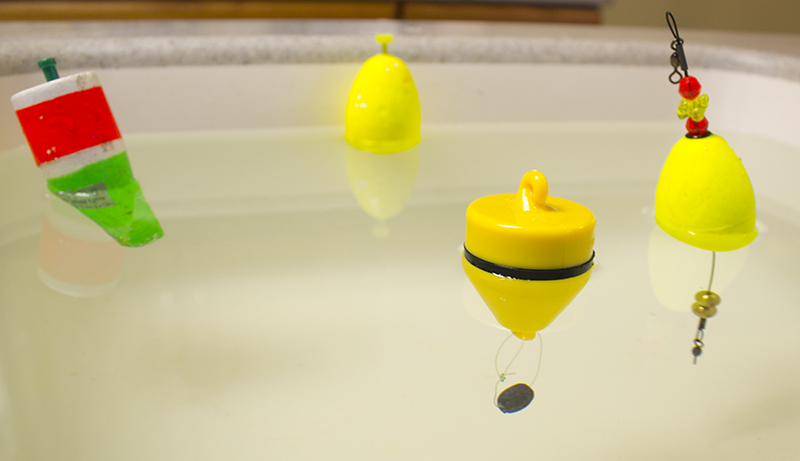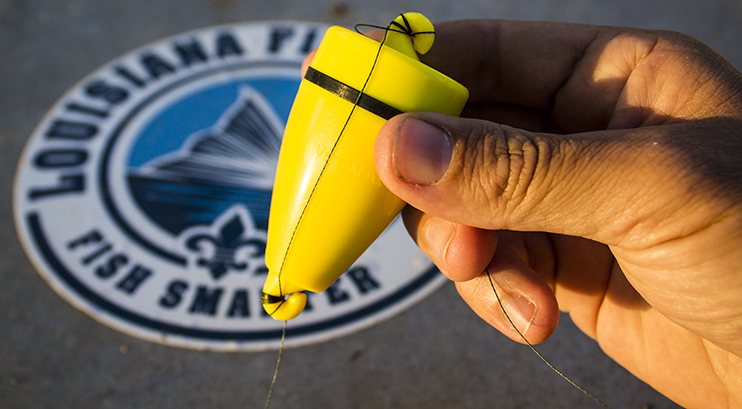Every once in awhile a simple product improves the way we fish. The VersaMaxx popping cork is one of them.
Two thousand pounds of fiberglass made the ninety degree turn like a Formula One race car. "Nothing turns quite like a Pathfinder" I yelled over the din of the Yamaha VMAX.
The Pathfinder 2200V rocketed out of the Spoil Canal towards Breton Sound. Our destination lay ahead, a small island with a decent tideline going around it. We stopped, engaged the Power Pole and pulled out the preferred rig of the day, an Inshore Rig.
The popping corks moved right to left revealing how well the water was flowing. They also revealed just how good the trout action was.
The corks disappeared under water like someone turning off a light switch. In short order we started dragging trout into the boat, one after the other.
The bite died off and we had over twenty fish, some in the cooler, others flopping around on the deck.
What people on the boat didn't know is that I also had a bag of twenty extra popping corks.
The clip-on, egg shaped corks worked very well, but are not tough and do not stand up to abuse over time. I had to have spares because they would break or come loose from the Inshore Rig.
If the entrepreneur inside of me had been paying attention I would have created a popping cork that was durable, adjustable in more ways than one and extremely versatile. Another entrepreneur did and that popping cork today is called the VersaMaxx.
Why a Popping Cork?
They are great tools for fishing the marshes of Louisiana. Fishing live shrimp under a popping cork is the standard, as it is a proven technique used time and time again to catch limits of speckled trout and redfish.
If you are not sure then look at the rigs the best guides use. You will see Inshore Rigs or something very similar.
Even the most experienced inshore angler still has a popping cork or two in his tackle box. Some days speckled trout want their bait suspended and that is where the popping cork comes into play.
I cannot tell you how many times I have fished a spot and my best results were had from live shrimp or artificial lures suspended under a popping cork. If you don't have a good cork or two then know your tackle box is incomplete.
Popping corks are excellent noise makers. Trout and redfish may not care for an anchor splashing into the water but the subtle rattle and splish-splash of a popping cork can pique their interest. A rattle will give them something to zero in on, even in the most adverse conditions.
What makes the VersaMaxx different?
There are many popping corks, but none are like the VersaMaxx.
It is a highly adjustable, unweighted popping cork.
The VersaMaxx is solid, made of two pieces that screw together and has no moving parts. There is nothing that can rust and because it uses a rubber gasket it will not leak.
It is very difficult to break this popping cork. Fish cannot mangle it because there are no stiff wires in its construction, like some popping corks.
In fact, the Versamaxx cork was stress tested under load and didn't break until 80lbs of tensile strength was applied to it. The Versamaxx is also removable. Some corks are tied directly on to the line and this limits the versatility of what you are fishing with.

Being able to quickly attach a cork above your favorite plastic can be the difference between locating fish and not finding them.
What is adjustable on a Versamaxx?
Several things are adjustable on the VersaMaxx popping cork:
- length of leader line
- rattle
- weight
The VersaMaxx can be modified on the fly to meet all conditions. Being able to remove the popping cork from your rig is essential. The Inshore Rig is so effective because it can fish the entire water column and VersaMaxx popping corks complement this.
The ability to change the length of line under the popping cork is also key. VersaMaxx does this with ease.
One of the coolest aspects of a VersaMaxx popping cork is the amount of rattle is not adjustable but customizable. VersaMaxx popping corks ship with a small container holding glass, plastic and steel beads.
You can experiment with different combinations and amounts to create a quieter, louder or completely different kind of rattle. I would need an entire fall season to really figure out which rattle is best for trout and redfish, but so far a combo of glass and metal has worked great for speckled trout.

The VersaMaxx comes with glass, plastic and metal rattle contents to customize the kind of rattle you want the fish to hear.
Adjustability of the cork's weight is an overlooked advantage of this tackle. You can put as many lead weights as you want inside of the cork, making it an artillery shell that cuts through 20mph winds.
Years ago when I operated my fishing charter I would use weighted popping corks on an Inshore Rig so my customers could cast more easily.
However, the weight of those corks was not adjustable and sometimes I needed more weight for them to be comfortably casting.
How to properly use a VersaMaxx Popping Cork
A few anglers have experienced issues when using the VersaMaxx fishing cork, so let's be sure to cover some basics on its use.
Adding Weight
The VersaMaxx is an unweighted cork and if no weight is added it will sit on its side. There are two good things about this:
Firstly, it gives more room for the beads to move back and forth, creating a better rattle effect.
Secondly, if a fish is "sitting" on the bait you will know when the cork stands upright in the water due to the fish tugging on it slightly.
The best way to make the cork sit upright is to use an Inshore Rig and I have found that a 1/4oz of lead will make it sit upright.

With a 1/4 oz of weight the VersaMaxx with float like any weighted cork. But laying on its side has distinct advantages.
Attaching to Fishing Line
You attach the VersaMaxx fishing cork by wrapping the line around the top and bottom eyes eight times each.
Whenever the line passes into the eye you will hear a "click." This works for monofilament or braided lines. Both have been tested and both will not slip if wrapped 8 times on the top and bottom.

People run into slippage issues when they do not appropriately wrap the VersaMaxx.
Adding Rattle Contents
The VersaMaxx is really the first of its kind. It will be up to you to try which bead combination makes the best rattle for whatever fish species you are targeting.
This will come with experience, and that is why its important to get out there and fish your butt off.
Your VersaMaxx cannot catch fish if it's not in the water.
Cons of the Versamaxx
A Little Heavy
For me, personally, the Versamaxx is kind of heavy, even with only rattle contents. This makes rigs heavier than what is recommended on most medium power, fast action rods.
So for that reason I still use the same clip-on egg cork I have always used.
Sits Low
I have noted the VersaMaxx sits low in the water. This is why the second generation VersaMaxx features a taller cap, making it easier to see.
However, it is important to notate that the VersaMaxx sits low so more surface area is exposed underwater where the fish are. This way the rattle sound is heard and felt by the fish. If the cork were designed any other way the rattle would not be as effective.
Summary
Using good, quality equipment is key, not just during the good conditions but also the difficult. I think this is where the VersaMaxx popping cork shines.
When the wind is blowing hard and the water is dirty VersaMaxx will be there to bail me out.

Hey Glenn! You can find this cork at almost any local tackle store on Louisiana’s coast, or on Amazon. Tight lines!
Where can I buy this product